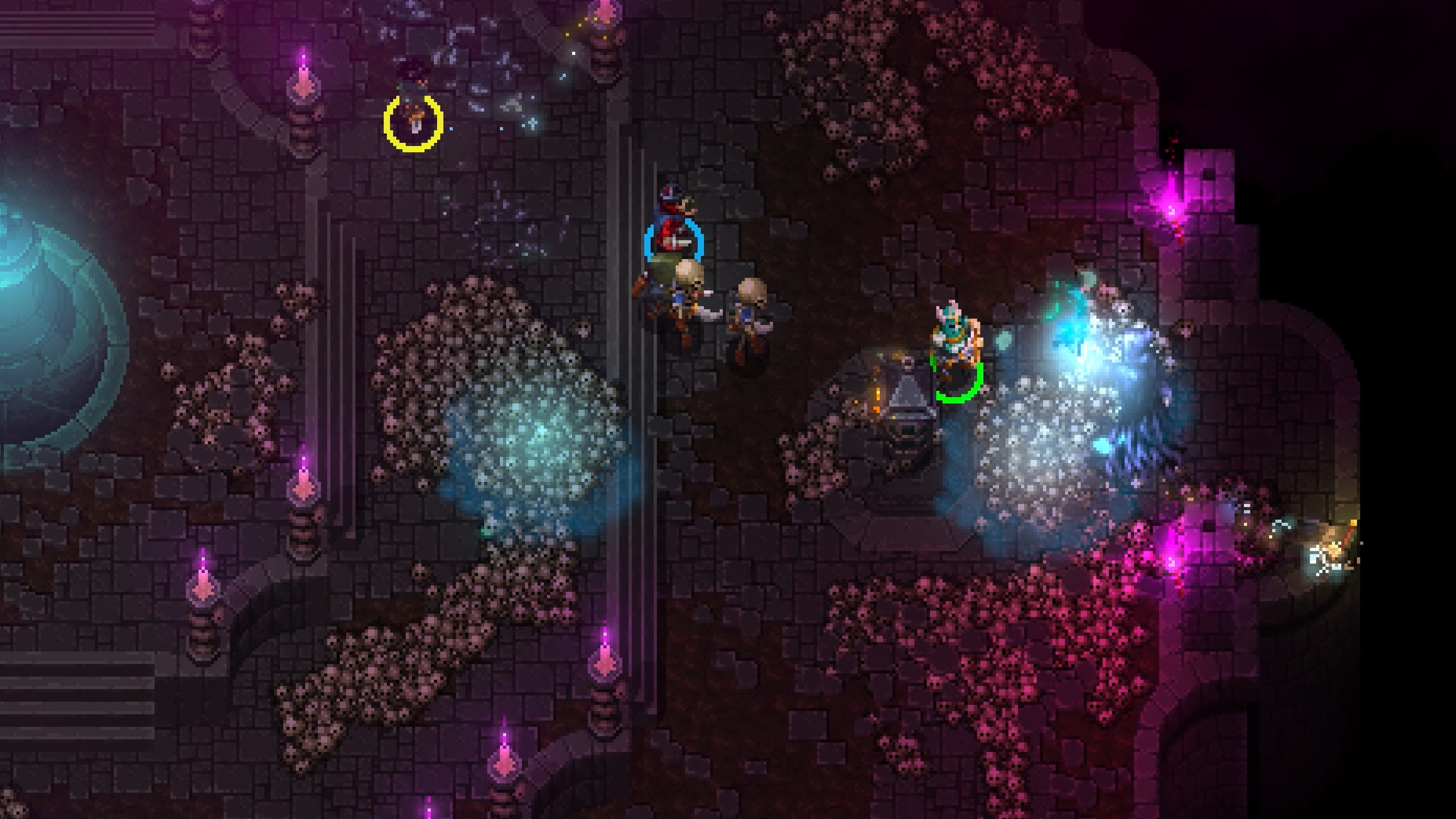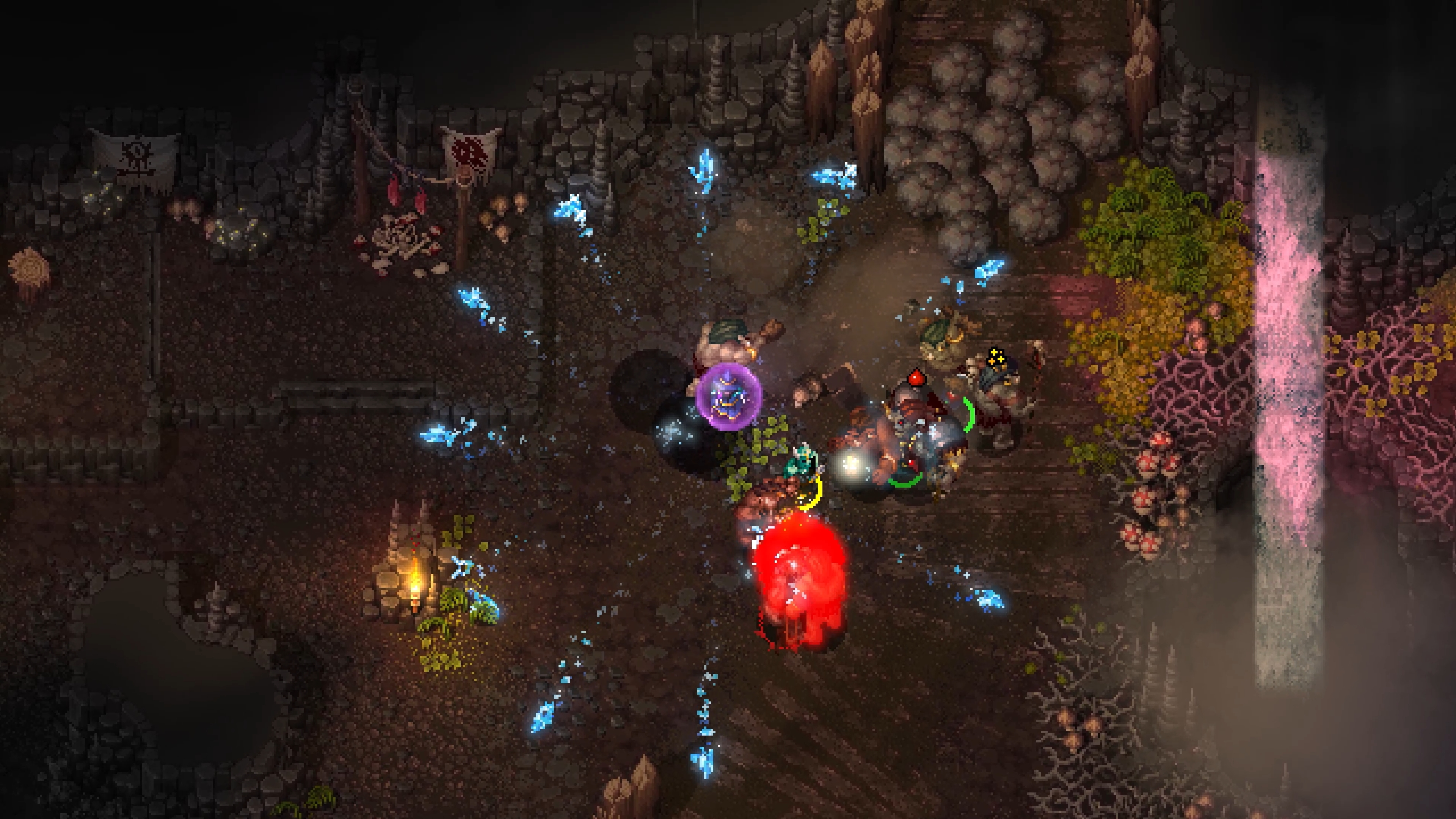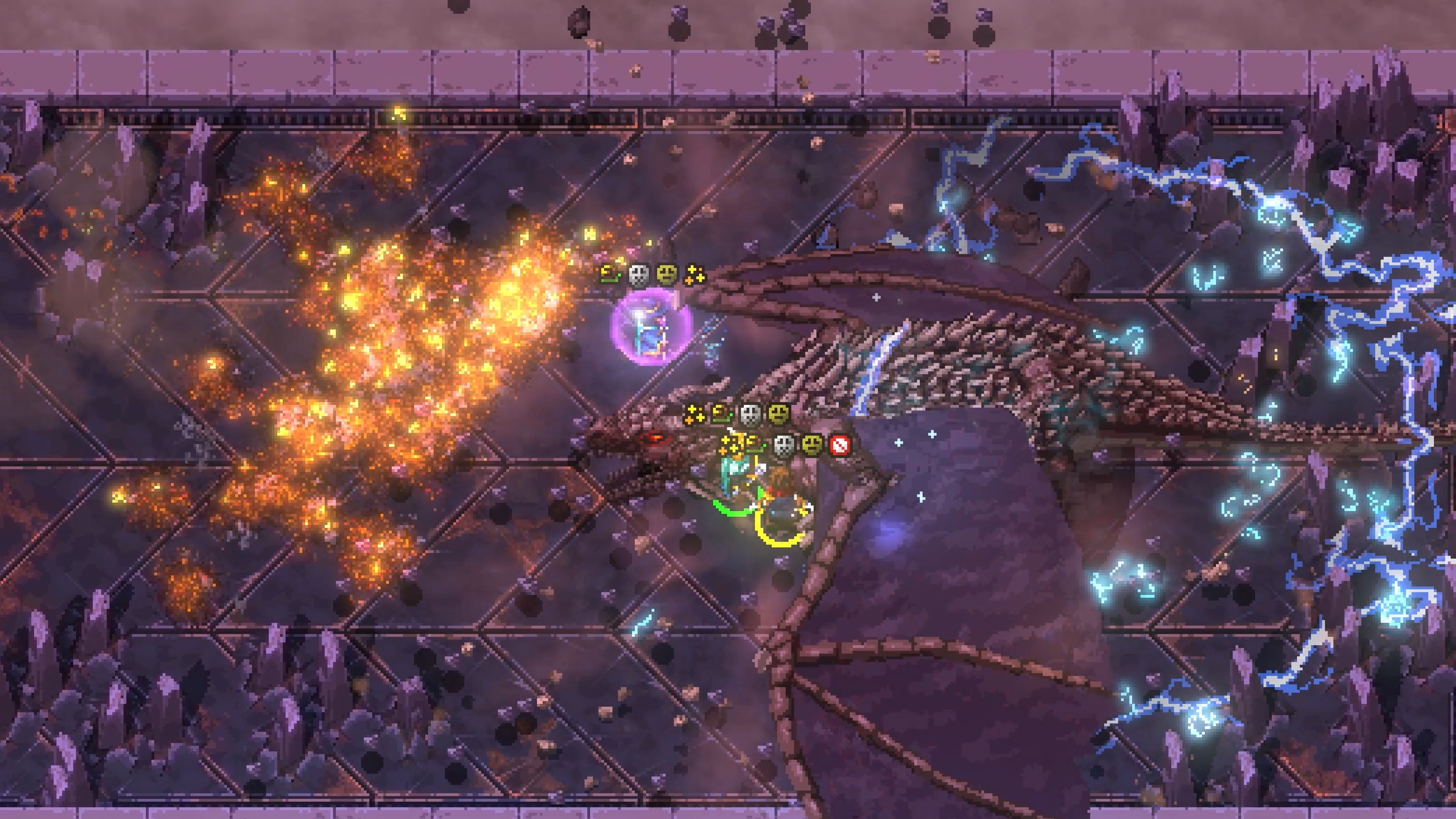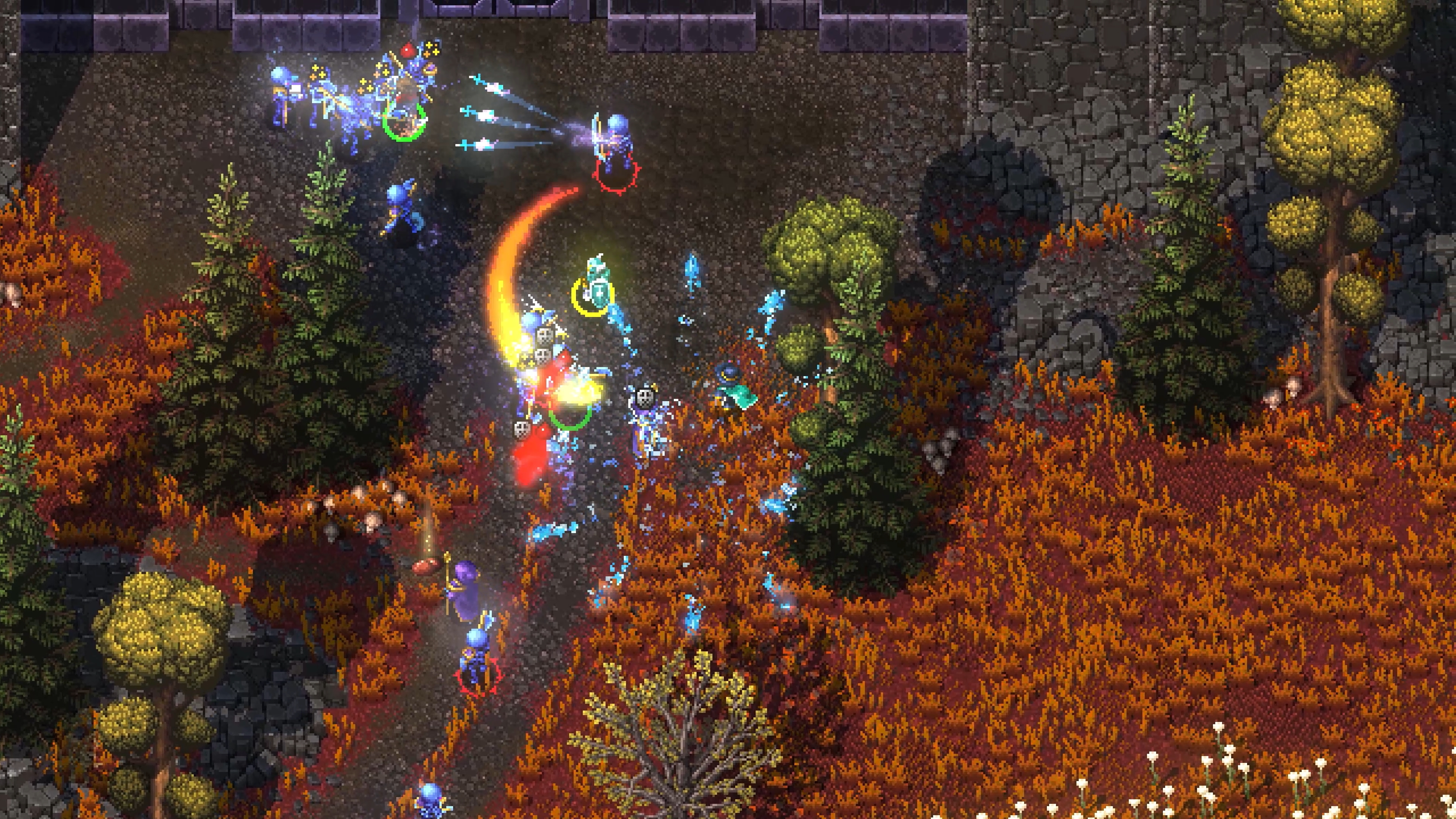Hammerwatch 2 is just the right micro-RPG for the moment
There are some great 30 minute dungeon runs in your future if you've got tolerance for—or enjoy—old school tropes.

I'm enjoying the story-driven action of Baldur's Gate 3, you might be playing Starfield, but both of those are a bit too complex to fit in a quick 30-minute session in the evening. The ambitious sequel to 2013's Hammerwatch hits at a perfect time for me: this mini hack and slash takes Hammerwatch's action RPG combat and goofy fantasy setting and pushes it into a wider open world with a day-night cycle. It's a bit odd, like an early open world games fused with twin-stick combat out of classic Gauntlet.
Hammerwatch 2 welds the two really well. You can dive into a cave full of wolves and spiders and accomplish some quests, hop back to town, and save right quick in that half hour. The characters? They're all like King Reggie, Evil Lich Badguy, the Dragon Thundersnow, and the like. No complex lore to digest, just lots of fetch quests and frantic fights against overwhelming hordes of baddies.
The experiment is successful in both how it plays and how it creates a sprawling world, but some of Hammerwatch 2's attachment to old-school design tropes holds it back. What remains absolutely true? The twin-stick aiming and movement is a great match for the action RPG genre.
We're in a great era for twin-stick controls: I got primed for Hammerwatch 2 playing Halls of Torment, a kind of Diablo 1 meets Vampire Survivors smashup that tosses run-based levels and loot with persistent upgrades to various character classes. Which is the good stuff, for real.
As a Hammerwatch 2 Paladin, I had rapid hammer-strikes that could stun, which I'd use to circle hordes of enemies before slamming a charge move directly through the mass of them. Quickly whipping around with the twin-stick controls, I'd drop an area of effect melee attack that left a pool of sacred fire behind. Later on I transitioned to a different strategy, one that had me using a longer-ranged dash to jump between groups of enemies as they pursued me, taking each out in turn.
As more magical and ranged enemies show up during the campaign it really layered on classic mechanics: Enemies that run as you hit them, that drop area denial ranged attacks, or that telegraph lines of attack before releasing them.
Healing is limited to what potion bottles you carry, craftable resources that you can equip three of at a time. They're your classic healing, mana, rejuvenation, and buff stuff—the nice part is in how they're limited. Each can be used a certain number of times, and they refill when you find a well or fountain inside a dungeon. Using your potions or not lends an element of attrition, of pushing your luck, to dungeoneering. Mess up mid-combat and you'll start to run low on potions—but what if there's a new well just a few rooms deeper? Better push on.
Keep up to date with the most important stories and the best deals, as picked by the PC Gamer team.
It's a 1990s world layout—many dungeons to find and kill everything inside for no apparent reason—with a more informative and approachable 2020s attitude toward lootable items, consumables, and crafting potions to use. No fooling around to discover recipes or whatever.
Hammerwatch 2 does come equipped with some of the frustrations of games from the '90s as well. The day/night cycle isn't easily bypassed, which means you've got to either just literally sit and wait or spend money to pass time at an inn, which can be frustrating in the early game when money is scarce. Even late-game, though, money can be precious: You've got to spend thousands of gold to reset your skill points. I'm not sure I've seen a high respec cost that went over well in a new game in years—especially frustrating in a game where you might want to try out different combinations of the skills your character offers.




It's not really optional, either: As you level up you move from Apprentice, to Adept, to Expert, then Master tiers, you'll want to put the majority of your points into higher tier and more powerful skills rather than rely on low-tier ones. That means you're required to respec so you can perform at top level.
Other stuff will get on peoples' nerves. This is a linear game and is built that way: Bosses and chests don't respawn so you can farm them, though regular enemies do pop back up as time goes on. That also means your character is bound to their specific instance and save. Where other action RPGs let you bounce back and forth to friends' games, a multiplayer instance of this game can only be played with the characters it was made for and vice-versa. That'll be enough to hold some people back, and at times each of those in turn got on my nerves, but what Hammerwatch 2 was offering pushed me past that.
Those problems seem big when you put them all in a row, but I undeniably enjoyed myself and grinding away at the monsters felt purely good. Perhaps what's most promising is that both of Crackshell's prior Hammerwatch games got a bounty of patches, upgrades, and tweaks over their lifetimes, not to mention expansions. I'm hoping that enough others enjoy Hammerwatch 2 enough to fund that kind of love and care for it, too.
Jon Bolding is a games writer and critic with an extensive background in strategy games. When he's not on his PC, he can be found playing every tabletop game under the sun.

